Starting seeds early

Why I am starting early?
In a previous post , I mentioned that I would plant seeds for next season far earlier than usual. Usually, I would only begin with seed starting at the end of January. I started even later this year. I certainly won’t be doing that again. The season has not been as good as it could have been. To give my Chillies a more extended season, I’m starting seeds for next year now. In this way, I can avoid running out of time before my Chillies have fully ripened.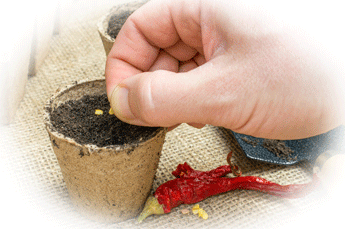
I believe, particularly with superhot varieties, there is a greater chance of a harvest in a single season. Many of these Chillies have lengthy seed to maturity growth rates. Some can take over four months before they bear any fruit. The fruit then has to ripen. Factor in that ripening depends on the amount of sunshine there is, and you could be waiting for over six months.
I won’t be starting all my seeds now. For varieties with shorter seed to maturity rates. I will start seeds in line with what most other growers do. I will start these seeds in February. Quicker growing varieties can produce fruit in as little as twenty-two weeks from the date they are sown. For these types of Chillies, it makes sense to start later. The Chillies I intend to grow that fall into this category include Chilli Trinidad perfumes, Zimbabwe Blacks, Pelita peppers, Malawian Birds – eyes, Apache F1s and Tangerine dreams.
Beginning next season now
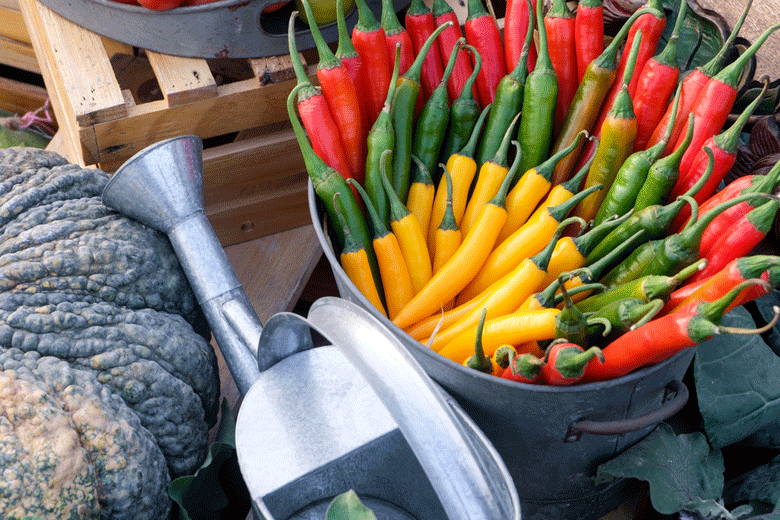
Starting seeds indoors
I am sure it is probably against the conventional wisdom to start seeds early, but I believe there is no reason why it cannot be done. If seeds are started indoors in heated propagators, they will germinate. From there, it is a matter of keeping them warm on heat mats and under grow lights. They will be held under the lights until it is warm enough to take them outside after potting-on and hardening off.
This will not be overwintering in the stricter sense of the term. Overwintering involves pruning mature plants back to a few branches. They then die back and become dormant. The plants stay that way for the rest of winter. Come spring, they bounce back into life and start growing again.
These seedlings will be raised indoors during the depths of winter. They will be kept warm enough by the heating mats, and will get “sunshine” from the grow lights. In addition, if they are kept well fed with a fertilizer like Chilli Focus, there is no reason for them not to do well and prosper.
The reason this can be done is that many Chilli plants are perennials in their natural environment. They originate from countries with far warmer climates than the UK. This means the plants never get exposed to frost. Under these conditions, they don’t die off over winter. After the growing season, they simply go into dormancy. Then, come spring, they jump back into life.
Which varieties
Carolina reaper
The Carolina reaper falls under the Capsicum Chinense species. It is officially the hottest Chilli in the world. This Chilli has an average Scoville rating of about 1.64 million SHU. Some pods have been measured over 2000000 SHU. It is a cultivar developed by Ed Currie by crossing a La Soufriere pepper (from the Caribbean) and the Naga Viper Chilli (from Pakistan).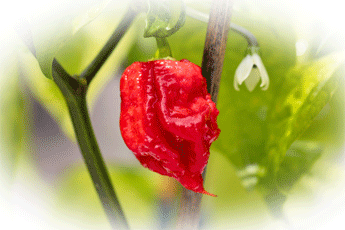
The bush can grow to five feet high and four feet wide when the plant is mature. It produces red and gnarled pods with the distinctive Carolina reaper tail. The pods are between one and half and two inches long.
The Carolina reaper can take up to 250 days before it produces any fruit. It can take up to six weeks alone to germinate the seeds. Growing times can however vary. Individual plants can grow more quickly.
When planting Carolina reaper seeds later (particularly in the UK), it may be worth considering overwintering this Chilli. The seed can then be started in one season, and fruit harvested the following year. However, by starting now, I hope to get a harvest next season. However, a crop in one season is possible if the weather plays ball.
Ghost Chillies (Bhut Jolokia)
The Ghost Chilli is an interspecific hybrid between the Capiscum Frutescense and Capsicum Chinense species. It is widely grown in Northern India. This year, I will start seeds for two different cultivars of Ghost pepper. One is red, and the other is a white Ghost Chilli. Ghost Chillies are right up there on the highest level on the Scoville rating chart. They measure over a million SHU. 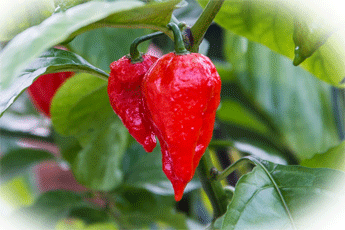
When fully grown, it reaches a height of over three feet. It produces two to three-inch Chilies in various colours, including red, white, and chocolate. The skin of the white Ghost peppers will be smooth. The red variety will have a wrinkled skin. In line with other super hot Chillies, it can take up to 120 days from the first potting on until fruit is formed. This growing period can vary, with some plants developing faster than others.
Ghost Chillies are used to make hot curries, hot sauces, and as Chilli flakes. This is another Chilli where gloves need to be worn when handling them. They are so hot that Ghost Chiilies are used in hand grenades and pepper sprays by police and army in India and other countries around the globe.
Trinidad Scorpion Butch T
This is one of the hottest Chillies in the world. It has a Schoville rating of 1,000,000 – 1,463,700 SH. It was named after Butch Taylor, who was originally responsible for propagating the Chillies from seeds from the Trinidad Scorpion Chilli indigenous to Trinidad and Tabago. The Scorpion part of this Chillies 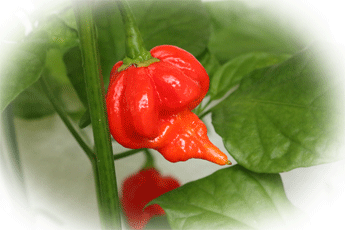 name is a reference to its pointed tail, which resembles a scorpion’s stinger.
name is a reference to its pointed tail, which resembles a scorpion’s stinger.
When Trinidad Scorpion Butch T bears squat, fat, fruit that resembles a Scotch bonnet with a sharp tail. Its pods are between 2- to 3-inch wide by 2-inch long. The pods change from bright green to yellow to bright red. The intensity of the heat increases through each colour change.
The Trinidad Scorpion Butch Ts seed to maturity growing period is about 120 days. Ripening of the fruit takes longer and depends on the amount of sunshine there is. I expect to harvest in August or September next year.
In line with other superhots, these Chillies should only be handled when wearing gloves. When they are used in cooking, care should be taken to limit the amount used. One Trinidad Scorpion Butch T is the equivalent of three to four Scoth Bonnets!
Hainan Yellow Lantern
A Chinese Chilli originates from the Hainan Island in South China. It is closely related to the Habanero and Scotch bonnet. They all belong to the Capsicum Chinense species.
When mature, the plant produces prolific amounts of yellow Chinese lantern shaped Chillies. The pods grow to two inches long and an inch wide. The Hainan yellow lantern Chilli has a Scoville rating of about 300 000 SHU. This is in the same range as Scotch bonnets and Orange Habanero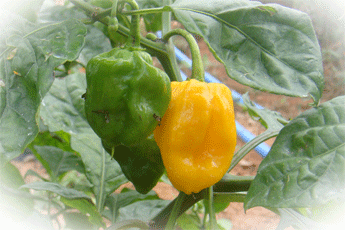
The bush should grow to between two and three feet tall. Hanain Yellow lanterns can take over 120 days from their first potting on to bear fruit . From there more time is needed for ripening. I expect my first harvest from this Chilli in June or July. I hope to harvest many more Chillies from these plants after that. They are apparently quite prolific producers
Hanain Yloow lanterns can be used to make hot sauce, particularly fermented hot sauces. The Chilli makes such good sauces that the regional airline in the area serves as one of its offerings on flights in the region. It can also be used as a substitute to Scotch bonnets in recipes where these Chillies are usually used. The flavour is described as Habanero, like with a similarity to Harold St. Barts
Maya Red Habanero
This Chilli is a mystery. Originally I thought there was only one Maya Habenero Red, but as it turns out there are at least two, maybe even three. According to sources on the web, these Chilllies do not resemble the standard shape one would expect from Habanero Chillies. In one variety, the fruit grows to about 3 to four inches, is more slender than normal Habaneros, and has a pointed tail. The other variety of Chilli bearing this name is more elongated and lantern shaped. Both have a Scoville rating, which in the 150000 to 300000 SHU range.
And this is where the mystery starts. The images shown with the advertisement for the seeds don’t resemble any of the mentioned. I could be growing something totally different. Only time will tell, as I will only be sure once I have grown out the Chillies. This could be interesting!
When will they reach maturity?

With most of these Chillies, I expect them to have reached a reasonable stage of maturity by mid-January. The Carolina reaper will take even longer. Sometimes it takes as much as two hundred and fifty days for this Chilli to produce any fruit.
These are all Chillies that I have never, so far, been able to bring to maturity. I am growing Habaneros this year, but they have not done well at all. They are still tiny. I aim to change all that with the seeds I am now starting.
Final thoughts
Okay, I already hear the argument. Surely, if these plants have reached maturity, they will be enormous. Do you have the space to house them? No, I don’t, but I believe I have the answer. This lies in keeping them in small pots to restrict their size. Then, when it comes to hardening them off, they will be potted on into pots appropriate for their optimum growth conditions.
Something else I believe will play a part. When the weather is cold, plants grow more slowly. So while the heat mats will keep them warm, they are certainly not going to keep them at the ideal temperature. I believe this will also restrict the growth of the plants.
Yet another experiment. Let’s wait and see if it works!
Image credits
Chella p / CC BY-SA 4.0 / via Wikimedia Commons
Kouya, / CC BY-SA 4.0 / via Wikimedia Commons
By Anna Frodesiak – Own work, CC0, https://commons.wikimedia.org/w/index.php?curid=55289916

